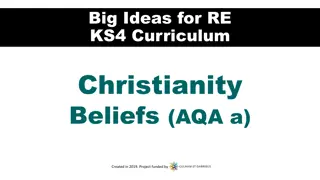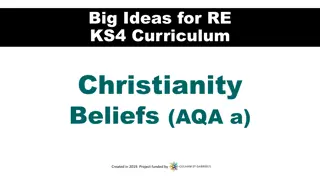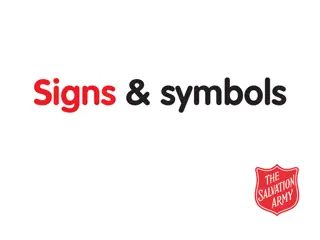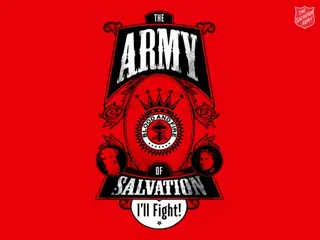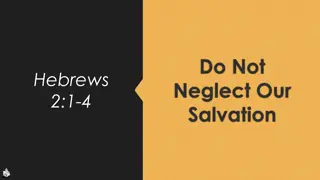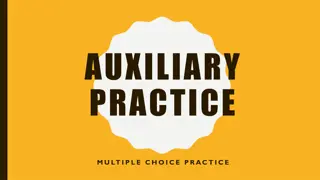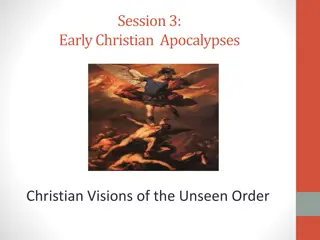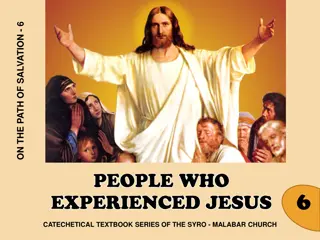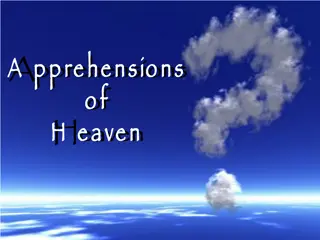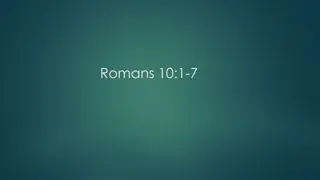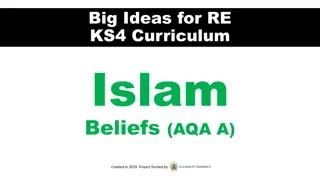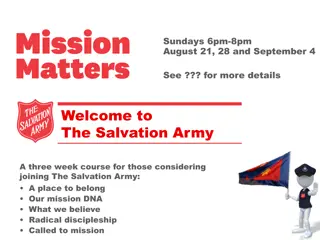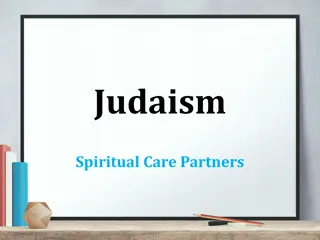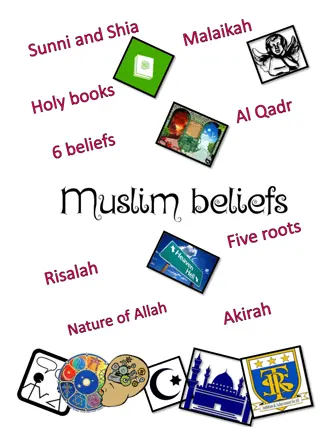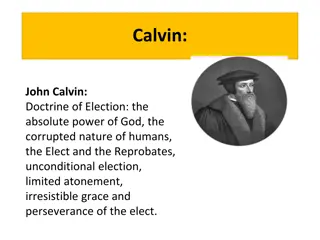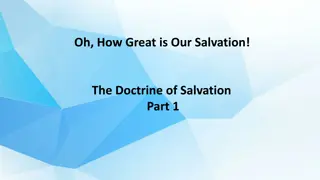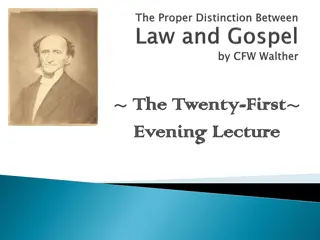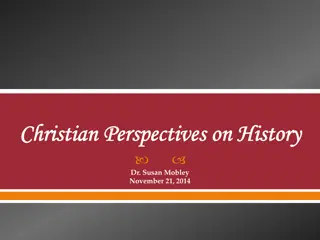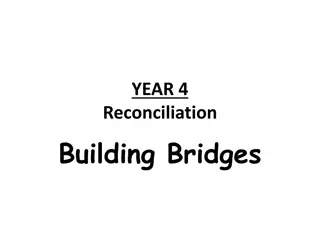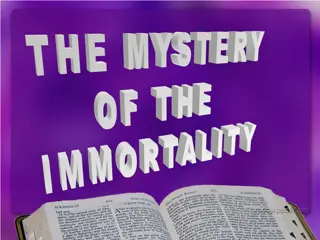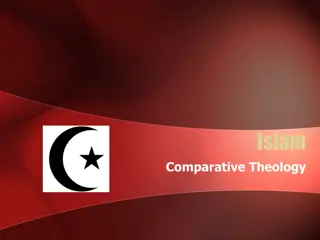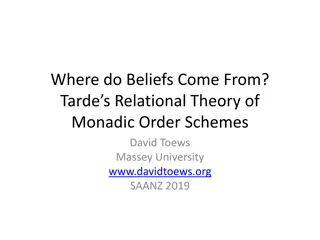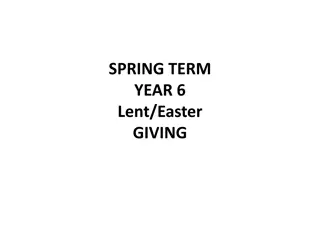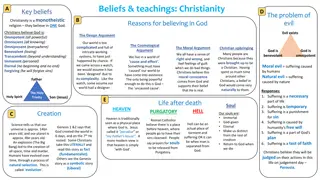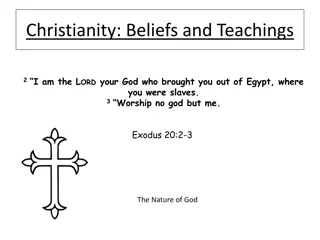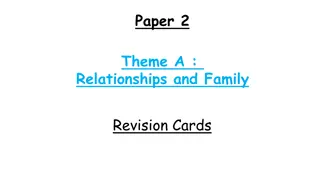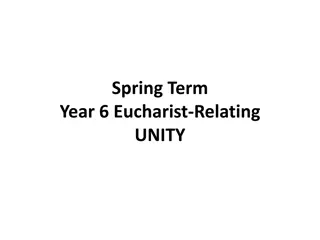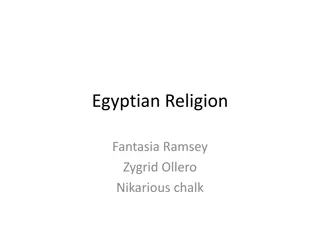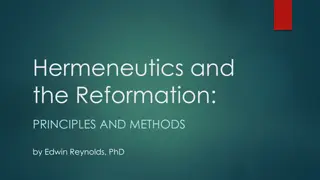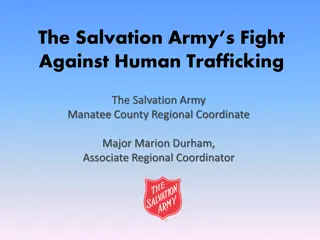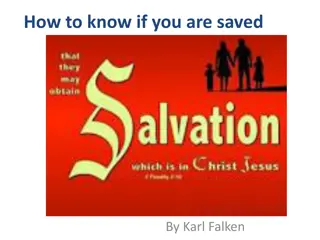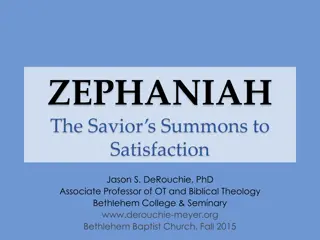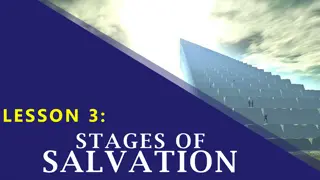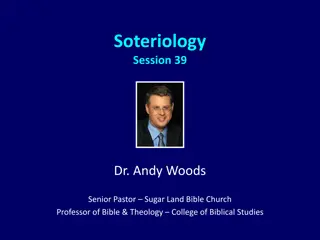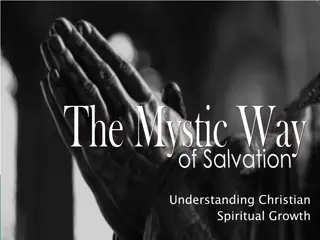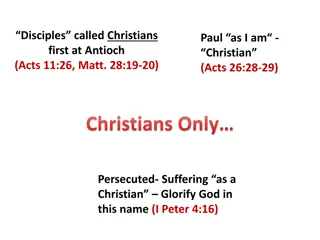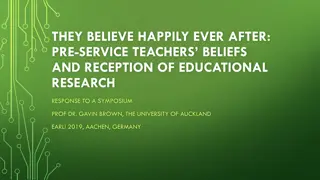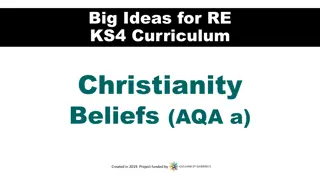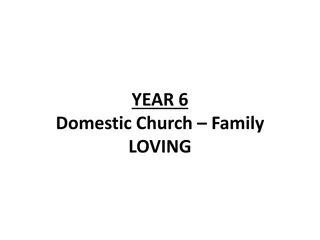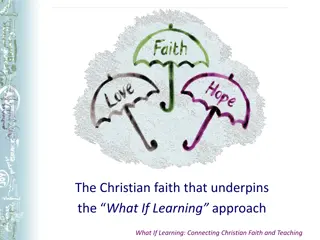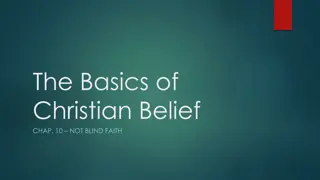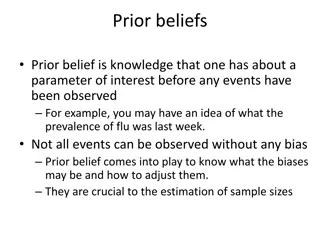Exploring Christian Beliefs on Salvation and the Afterlife
Dive into the diverse interpretations of afterlife beliefs in Christianity, focusing on salvation theology, Jewish beliefs, and Christian perspectives on heaven, hell, resurrection, and judgment. Engage students in group activities and discussions to deepen their understanding of these profound concepts.
Download Presentation

Please find below an Image/Link to download the presentation.
The content on the website is provided AS IS for your information and personal use only. It may not be sold, licensed, or shared on other websites without obtaining consent from the author. Download presentation by click this link. If you encounter any issues during the download, it is possible that the publisher has removed the file from their server.
E N D
Presentation Transcript
Big Ideas for RE KS4 Curriculum Christianity Beliefs (AQA a) Created in 2019. Project funded by
7 7- -8: This life or the next life: what 8: This life or the next life: what is more important? is more important? BIG IDEAS LEARNING BELIEFS: recap salvation theology BELIEFS: info about Christian beliefs in the afterlife DIVERSITY: different Christian interpretations of afterlife beliefs From the spec about the afterlife and their importance, including: resurrection and life after death; judgement, heaven and hell. Learning outcomes: Jewish beliefs about afterlife Christian beliefs about afterlife Christian beliefs about afterlife linked to Christian beliefs about salvation Different Christian beliefs RESOURCES Salvation maps (previous lesson) Playdough/ coloured card and pens 8 Afterlife Jigsaw Film:https://www.reonline.org.uk/resources /young-nuns/
Lesson 7 1) Look at from Eden to salvation maps from last lesson. Ask students to explain what they think salvation actually is. Is it a place? A state of mind? Will residents have bodies or be pure spirit? Is there such a thing as hell? Etc 2) Teach Jewish beliefs about the afterlife (next slide). Ask groups to identify which of these beliefs which are also seen in Christianity. Share answers. What seems to be different about Jewish and Christian belief 3) Using the info on the subsequent slide, groups create a page guide to heaven and hell 4) Give playdough or a folded card and coloured pens to each group. Give each group a key concept to present in their medium; salvation, incarnation, resurrection, heaven, hell, etc. Walk around the different models or images, looking at the representation of each concept. 5) Return to the initial question: what do students think salvation actually is? Discuss and share ideas
Jewish beliefs about the Afterlife Resurrection of the Body A key Jewish belief is in the resurrection of the body in a future age, where a Messiah will bring peace on earth. God will physically raise all the dead to life and establish God s kingdom on earth. For this reason Jews are not cremated but buried. This life The Torah is more concerned with this life than an afterlife. Where is God? In the book of Psalms the author seems to imply that God is both in heaven and Sheol: If I went up to heaven, you [God] would be there; if I lay down in the world of the dead, you would be there. (Psalm 139:8) Sheol The Bible talks about Sheol , the shadowy land of the dead. All the dead go to Sheol; whether they have lived good or wicked lives.
Christian beliefs about Heaven and Hell Heaven Heaven is beautiful and serene, a paradise in which to spend an eternity with God. Humans will reach heaven through following Jesus teachings and through Grace. The basics After bodily death the soul lives on. The soul is immortal On Judgment Day the body will be resurrected in order to be judged. After judgment souls are sent to heaven or hell. Purgatory The Catholic church teaches about a place where souls who are not ready for heaven can be purified; purgatory Hell Hell is a place of torment and pain. Some Christians argue that hell is a state of mind rather than a place. Others argue that a loving God wouldn t send someone to hell for eternity. Then they will go away to eternal punishment but the righteous to eternal life (Matthew 25: 46)
lesson 8 Display the Nicene Creed (next slide). Students identify all lines referring to the afterlife. Create a list- what does this tell us about the afterlife? Recap: can students connect beliefs about the afterlife found in the Nicene Creed with information learned last lesson? Challenge the class with a question: what is more important- this life or the next life? Either play a Christian Aid video for YouTube or display some Christian Aid adverts about their work. This charity s work is highly practical. Ask the class how Christian Aid would answer the question (what is more important, this life or the next life?). Display the Christian Aid tagline: we believe in life before death . Search online images. Play a 2 or 3-minute clip of this film: https://www.reonline.org.uk/resources/young- nuns/ . The documentary shows young women who have entered convents. Ask the class what these women s answers might be to the question. Discuss. Split into groups of 4 to run a jigsaw discussion (instructions on following slide). Use 8 afterlife jigsaw sheet for each group. You could arrange for groups to have access to IT so they can explore in more detail the organisations in the jigsaw. The documentary Young Nuns is worth watching in full. After the jigsaw discussions and expert group discussions, listen to all groups answers to the question: what is more important- this life or the next life?
NICENE CREED NICENE CREED (from http://anglicansonline.org/basics/nicene.html) WE BELIEVE in one God, the Father, the Almighty, maker of heaven and earth, of all that is, seen and unseen. For our sake he was crucified under Pontius Pilate; he suffered death and was buried. On the third day he rose again in accordance with the Scriptures; he ascended into heaven and is seated at the right hand of the Father. We believe in the Holy Spirit, the Lord, the giver of life, who proceeds from the Father and the Son. With the Father and the Son he is worshiped and glorified. He has spoken through the Prophets. We believe in one holy catholic and apostolic Church. We acknowledge one baptism for the forgiveness of sins. We look for the resurrection of the dead, and the life of the world to come We believe in one Lord, Jesus Christ, the only Son of God, eternally begotten of the Father, God from God, Light from Light, true God from true God, begotten, not made, of one Being with the Father. Through him all things were made. He will come again in glory to judge the living and the dead, and his kingdom will have no end. For us and for our salvation he came down from heaven: by the power of the Holy Spirit he became incarnate from the Virgin Mary, and was made man.
Jigsaw discussion 1) Create groups of 4. These are jigsaw groups because each person will being a different piece of information to fit into the jigsaw 2) Allocate numbers 1-4 within each jigsaw group. 3) All number 1 students now work together on information 1 4) All number 2 students now work together on information 2, etc. These are expert groups 5) Expert groups answer the question posed using their piece of information. Each makes notes to share with the jigsaw group 6) After expert groups have had time to read, discuss and answer the question using their information, return to jigsaw groups 7) Jigsaw groups listen to each member s answer to the question, based on their different information. The jigsaw group discusses and arrives at a group answer 8) Present answers to class


